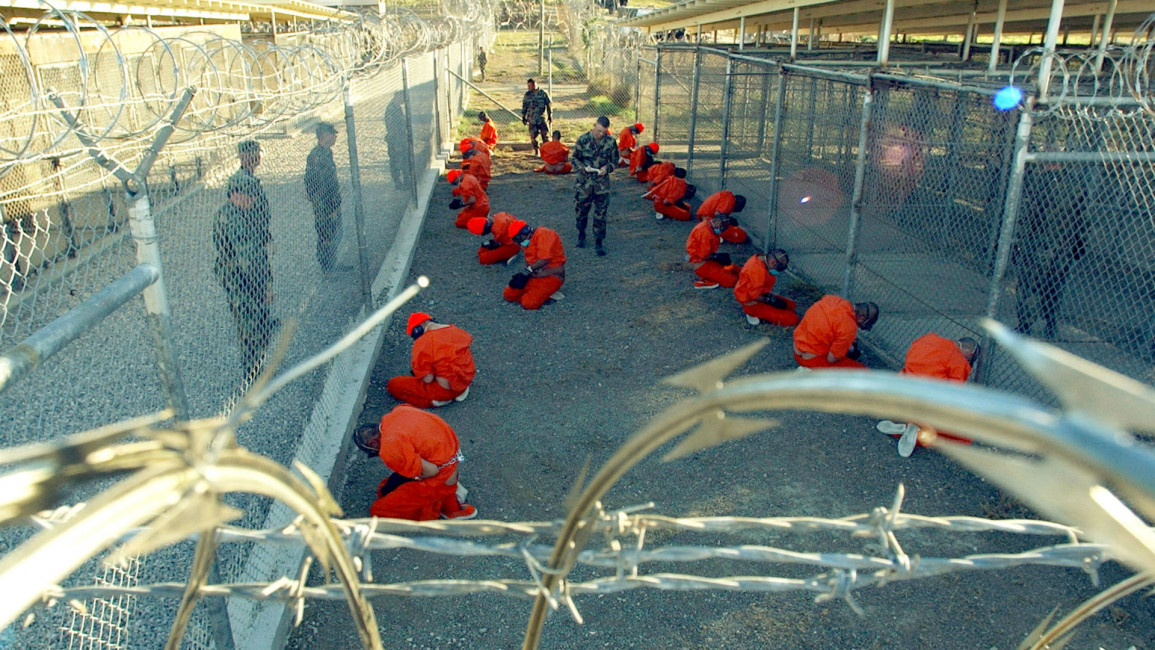Yemeni Guantanamo detainees transferred to UAE
The United States has transfered five detainees from Guantanamo Bay to the United Arab Emirates, the Pentagon said Sunday, another step in a long-delayed plan to close the controversial military prison.
The move means that 107 detainees remain at Guantanamo Bay, the Pentagon said in a statement, adding that it was "grateful to the government of the United Arab Emirates for its willingness to support ongoing US efforts to close the Guantanamo Bay detention facility."
The men were "lower-level" Yemeni detainees and each had been held for nearly 14 years without charge, The New York Times said.
The UAE had previously taken in just one former Guantanamo detainee - a citizen of its own - in 2008, the newspaper said.
The Pentagon named the five as: Ali Ahmad Mohammed al-Razihi, Khalid Abd-al-Jabbar Mohammed Uthman al-Qadasi, Adil Said al-Hajj Ubayd al-Busays, Sulayman Awad Bin Uqayl al-Nahdi and Fahmi Salem Said al-Asani.
The US opened Guantanamo to hold terror suspects following the 11 September 2001 attacks, and photos of shackled men in orange jumpsuits became a defining image of US foreign policy in the early 2000s.
Inmates were called "enemy combatants" and denied standard US legal rights, meaning many were held for years without charge or trial.
| Photos of shackled men in orange jumpsuits became a defining image of US foreign policy in the early 2000s. |
The Guantanamo population has dwindled, and prisoners no longer deemed a risk have either been repatriated or sent to a host country.
The Guantanamo prison costs the US taxpayer around $400-450 million annually, according to estimates.
"The United States coordinated with the government of the United Arab Emirates to ensure these transfers took place consistent with appropriate security and humane treatment measures," the Pentagon added, saying the five had been cleared for transfer after thorough security reviews.
The US keeps a "very close eye" on those who have been released, but some figures have estimated that up to 30 percent return to militant groups with the aim of carrying out attacks on Western targets.
But a US official has said that figure includes both confirmed and suspected cases. He said 16 percent of freed inmates were confirmed to have returned to the battlefield, while about 12 percent are suspected of having done so.
Election pledge
The latest transfers come with the Pentagon poised to release a much-anticipated report on shutting down Guantanamo Bay, even as Congress battles to block the transfer of the military prison inmates from eastern Cuba to US soil.
President Barack Obama made closing Guantanamo a key election pledge, but lawmakers have repeatedly thwarted him.
The report's findings are sure to fuel debate on the fate of dozens of longtime captives from the US's "War on Terror" who may well spend the rest of their lives behind bars.
The Pentagon this year sent a team of experts to review US sites that could house dozens of the most dangerous detainees following the closure of the prison.
Guantanamo still houses five accused plotters of the 11 September 2001 attacks. Among them is the self-proclaimed mastermind, Khalid Sheikh Mohammed.
Guantanamo is also home to the man accused of masterminding the attack on the USS Cole in 2000, Abd al-Rahim al-Nashiri. He was captured in 2002 and transferred to Guantanamo in 2006.
All six face the death penalty if convicted.


![President Pezeshkian has denounced Israel's attacks on Lebanon [Getty]](/sites/default/files/styles/image_684x385/public/2173482924.jpeg?h=a5f2f23a&itok=q3evVtko)



 Follow the Middle East's top stories in English at The New Arab on Google News
Follow the Middle East's top stories in English at The New Arab on Google News


